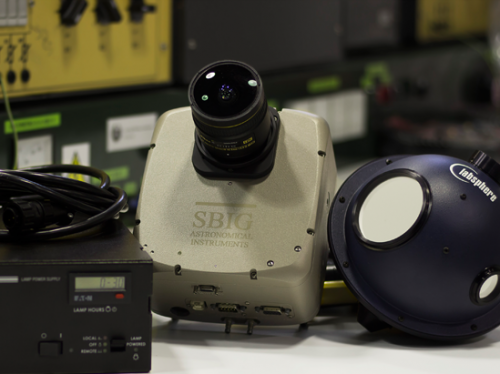New accurate portable instrument to measure the light pollution levels of a city

University of Granada researchers have patented a new portable means of measuring and quantifying the levels of light pollution in a city which is much more accurate and reliable than those currently used. It instantly quantifies the levels of light pollution or artificial brightness of the night sky background using a system that includes an all-sky camera and several interference filters.
This new technique has been developed by scientists in the University of Granada Department of Civil Engineering. It only needs a small, light instrument—designed by the same research group—which is easily transported and can be used practically anywhere, without the need for large-scale installations like astronomical observatories. The researchers are currently looking for companies interested in developing and manufacturing both the instrument and the calibration and measuring procedure.
Dr Ovidio Rabaza, principal researcher of the project, explains that "our measure pattern uses the radiance emitted by any calibration lamp with a known radiant flux in the interior of an integrating sphere. The sphere's internal wall is a Lambertian surface, which ensures the light it reflects is uniformly dispersed in all directions, guaranteeing that the measure patterns are almost perfect and, therefore, the measures are very accurate. Moreover, the multi-band measurements provide information about very narrow spectral bands that enable us to determine the type of light source emitting the light pollution detected".
An All-Sky Camera
This invention, patented through the University of Granada Office for the Transfer of Research Results (OTRI), consists of a portable instrument and calibration system. "The calibration system is made of an integrating sphere, a lamp to calibrate known spectral flux, and power source. The image acquisition system consists of a thermoelectrically-cooled CCD camera with an internal filter wheel", says Dr Rabaza. The camera is also equipped with several narrow-band interference filters and a fish-eye objective, capable of taking a full-sky image in a single exposure and with each filter focused permanently to infinity.
The protocol—developed by the University of Granada—"is clearly innovative because for the first time relative irradiance and sky background luminance have been measured through wide-field images, of all the sky, instead of using more conventional methods, like astronomical photometry".
Moreover, since it uses lights as calibration sources instead of standard stars with known flux—as current classical astrophotometry methods do—"you don't need to know about astronomy to measure sky background brightness so, once the instrument's been calibrated, measurement is immediate".
Provided by University of Granada




















